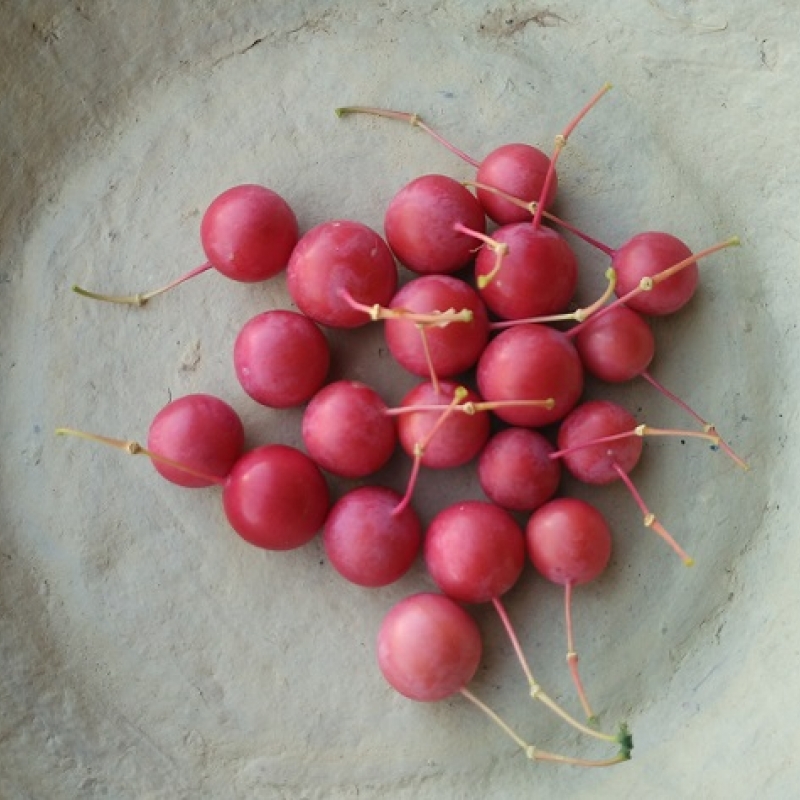The harsh landscape of the Thar Desert supports a surprisingly large number of hardy, drought-resistant plant species. These plants have adapted to the desert conditions of sandy soil, scarce water and long hours of strong sunlight. Some have deep root systems to tap into low groundwater levels, others have smaller or no leaves, and spiky thorns to save on water loss through transpiration. Some species, particularly grasses, and small herbaceous plants are ephemerals in that they live in short seasonal cycles; they germinate in the first rains in July and die out by the time the soil dries up by December, leaving behind seeds that will bloom again next year.
The vegetation of the desert remains crucial to the survival of the nomadic pastoral and agricultural communities, providing them with food, fodder, fuel, traditional medicines and a host of other derivatives.
Name: Khejri/jhand/sangri
Scientific name: Prosopis cineraria
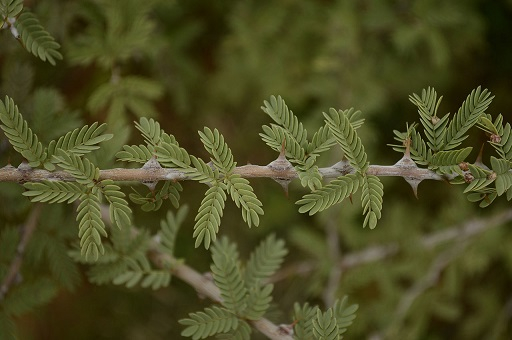
Figs. 1a & 1b. Khejri (Source: 1a, Arna Jharna; 1b, Wikimedia Commons)
Features
- Medium sized, deciduous
- Small leaves, thorny branches
- Deep root system penetrating up to 30 metres
- Tiny yellow flowers in spikes
- Bunches of slender fruit pods
Uses/Significance to Community
- State tree of Rajasthan
- Pods gathered as vegetable when green
- Provides timber
- Range of traditional medicine
- Fodder for livestock
Name: Rohira/luar/desert teak
Scientific name: Tecomella undulata
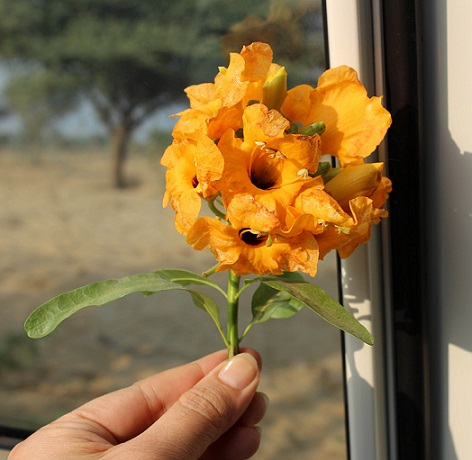
Figs. 2a–2c. Rohira (photographs by Malini Saigal)
Features
- Small to medium deciduous tree
- Trumpet-shaped flowers in red, yellow or orange clusters
- Seed pods are long and thin, gently curved
Uses/Significance to Community
- State flower of Rajasthan
- Excellent wood used to make furniture, tools and printing blocks
- Traditional medicine
Name: Kumatiyo/gum arabic
Scientific name: Acacia senegal
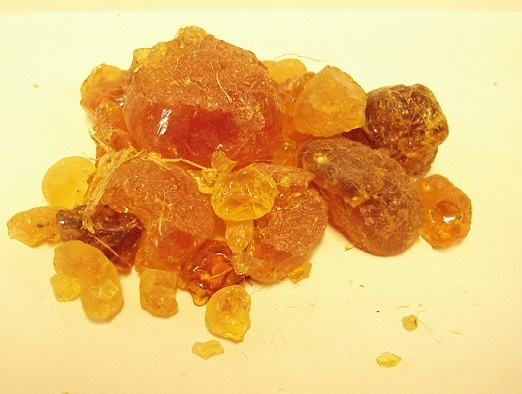
Figs. 3a–3c. Kumatiyo (Source: 3a, Arna Jharna; 3b & 3c, Wikimedia Commons)
Features
- Small deciduous tree
- Shiny dark red spines in sets of three, with one thorn hooked like a parrot’s beak
- Creamy white flowers in cylindrical spikes
- Flat brown seed pods, gently curved or straight
Uses/Significance to Community
- Source of the true gum arabic, once used in the printing industry as an adhesive
- Also used in processed food
- Seeds collected when green to make a traditional Marwari vegetable dish
Name: Hingot/hingoto/hingua/hingorni/desert date
Scientific name: Balanites roxburghii
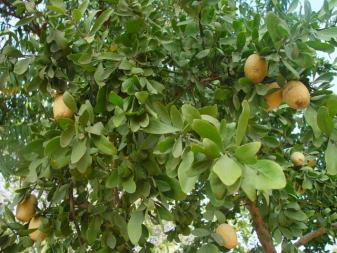
Fig. 4. Hingot (Source: Wikimedia Commons)
Features
- Small tree or deciduous bush with thin branches
- Small leaves
- Long green thorns
- Egg-shaped woody fruit
Uses/Significance to Community
- Seeds, fruit, leaves and bark have medicinal and detergent use
- Fruit is a natural dewormer eaten by pigs, porcupines, ruminants and jackals
Name: Jaal/peelu/dhalu/toothbrush/mustard tree
Scientific name: Salvadora persica
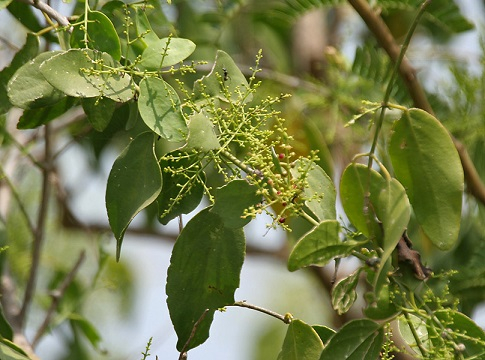
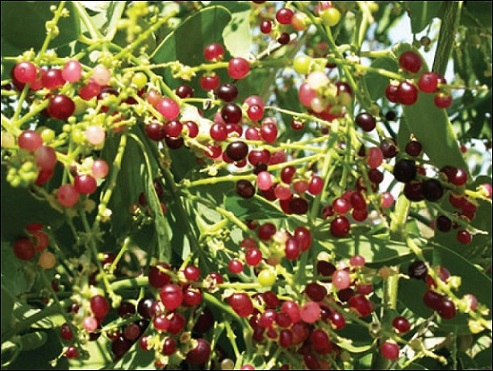
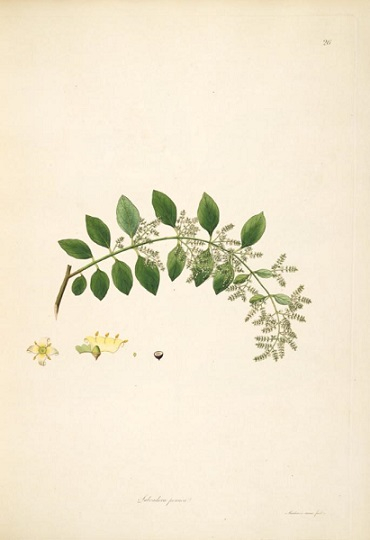
Figs. 5a–5c. Jaal (Source: Wikimedia Commons, 5a & 5b are photographs by J.M. Garg)
Features
- Resilient tree with evergreen foliage of fleshy leaves
- Knobbly trunk
- Tiny white flowers in branching clusters
- Small translucent berries in red or cream
Uses/Significance to Community
- Many traditional medicines
- Small creatures like rodents and birds nest in the trunk
Name: Kharo jaal/bada peelu
Scientific name: Salvadora oleoides
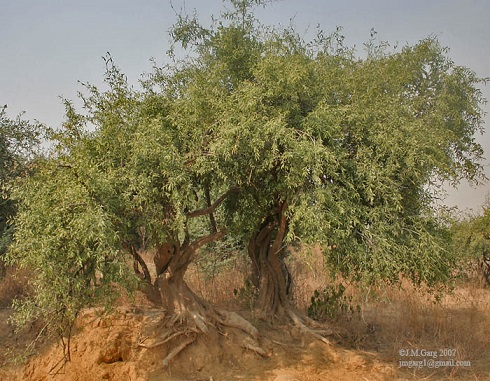
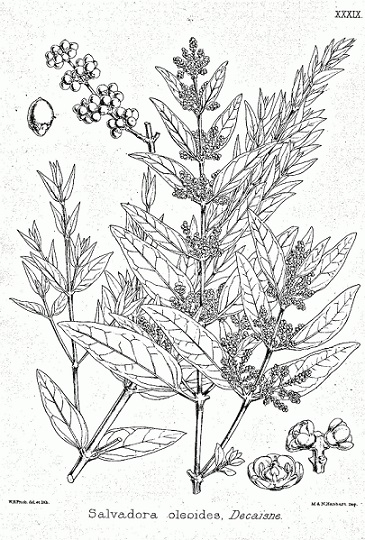
Figs. 6a & 6b. Khaaro Jaal (Source: Wikimedia Commons, photograph by J.M. Garg)
Features
- Small evergreen tree
- Dense canopy of green leaves
- Branches may droop down to ground
- Trunk more gnarled than peelu
Uses/Significance to Community
- Small creatures like rodents and birds nest in the trunk
Name: Neem
Scientific name: Azadirachta indica
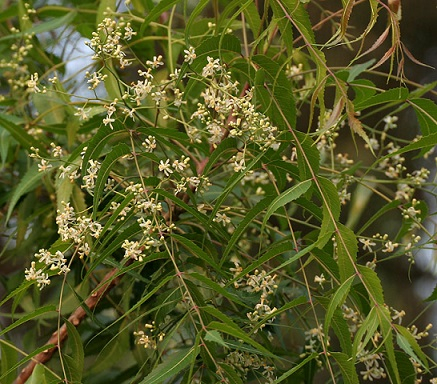
Figs. 7a & 7b. Neem (Source: 7a, Arna Jharna; 7b, Wikimedia Commons, photograph by J.M. Garg)
Features
- Semi evergreen, medium to large, grows to 15 metres
- Not native to region but well adapted to it
- Honey-scented flowers
Uses/Significance to Community
- All parts have many medicinal uses
- Timber used for planking
Name: Ber/Indian jujube
Scientific name: Zizyphus mauritiana
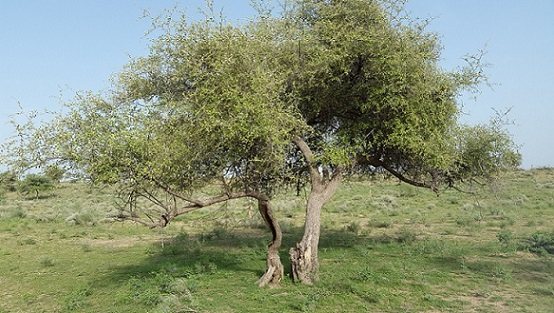
Figs. 8a–8c. Ber (photographs by Malini Saigal)
Features
- Short hardy tree with evergreen canopy
- Spines in pairs with one hooked
- Variable leaf sizes from medium to small
- Pale greenish flowers in small clusters
- Fruit is round or oblong
Uses/Significance to Community
- Rich in Vitamin C, the fruit provides a commercial crop, fodder for livestock and food for wild animals
- Shellac is made from the resin on ber leaves
- Bark and fruit yield a dye and tanning material
- Roots, bark and fruit are used in traditional medicine
- Wood is used for farm implements, beams, oilseed crushers
- Wood makes fuel and high-grade charcoal
Name: Googal/mukul myrhh
Scientific name: Commiphora wightii
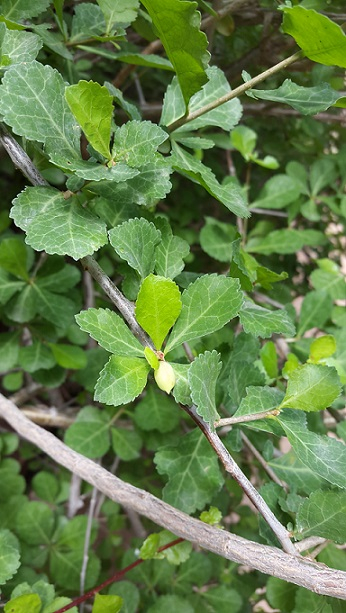
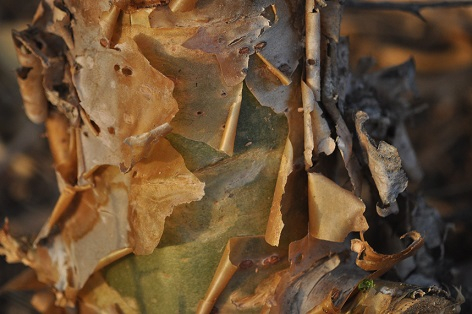
Figs. 9a & 9b. Googal (9a, photograph by Malini Saigal; 9b, Arna Jharna)
Features
- A low stout thorny shrub, sometimes a tree
- Small, scanty leaves
- Shiny, peeling bark
- Small red flowers
- Exudes a resin called ‘Indian bedellium’ or ‘gum googal’ in the cold season
Uses/Significance
- Most valuable medical plant
- The resin releases a myrhh-like fragrance when burned and is used as incense
- In the Red Data list of endangered plants
Name: Kankera/red spike-thorn
Scientific name: Maytelus senegalesis
Fig. 10. Kankera (Source: Wikimedia Commons, photograph by Aldonix)
Features
- Small deciduous crooked tree or bush
- Branches with solitary long spines, often leaf and flower bearing
- Tiny white scented flowers in bunches
- Tiny dark red fruit
Name: Dhau/dhawra/gum ghati/button tree
Scientific name: Anogeissus latifolia
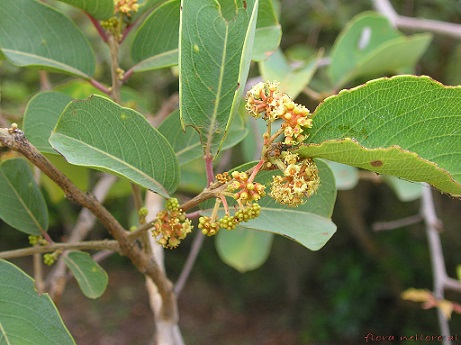
Fig. 11. Dhau (Source: Wikimedia Commons, photograph by Lalithamba)
Features
- Tall, slender deciduous tree growing upto 24 metres
- Clusters of tiny flowers
- Tiny spiky red fruits
- A honey-coloured resin called gum ghati is tapped from its trunk
Uses/Significance to Community
- The resin is used as binding agent in foods, drugs and skincare products
- The leaves and bark are used for dyeing and tanning
- Tussar silkworms are reared on its leaves
- The timber is used in construction, and for charcoal and fuelwood
Name: Badh/Indian banyan/east Indian fig tree
Scientific name: Ficus bengalensis
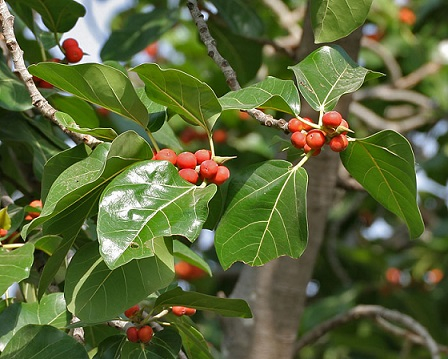
Figs. 12a & 12b. Badh (Source: Wikimedia Commons; 12a by N. Aditya Madhav, 12b by J.M. Garg)
Features
- Spreading, almost evergreen tree with prop roots. Can grow to astonishing sizes in height and width
- Not a species of the arid region, but grown all over India
- Glossy oval leaves
- Fruit are red round figs
Uses/Significance to Community
- The fruit and the shady environs of the branches sustain bats, monkeys and birds
- Leaves and twigs are excellent fodder
- Bark, leaves, latex and root fibres have medicinal uses
- Worshipped by Hindus as the consort of the pipal tree
Name: Pipal/sacred fig
Scientific name: Ficus religiosa
Features
- Large deciduous tree, up to 27 metres high
- Sinewed trunk
- Heart-shaped leaves with prominent pointed tips
- New leaves are very colourful in shades of rust and yellow
- Fruit is round, in pairs, and changes from unripe yellow-green to deep red-black when ripe
- Not an arid species, but cultivated across India
Uses/Significance to Community
- Most sacred of Indian trees. Often there is a shrine at the base
- Root, latex, bark, fruits and new shoots are used as medicines
- Fruits eaten by birds, and leaves are fodder for buffaloes and elephants
Name: Shisham/chirhol
Scientific name: Dalbergia sissoo
Fig. 13. Shisham (Source: Arna Jharna)
Features
- Middle-sized deciduous tree
- Oval leaves with pointed tips
- Small flowers in creamy clusters
- Long flat fruit pods
- Not an arid species but adapts to dry conditions
Uses/Significance to Community
- The best quality timber
- The wood ‘raspings’ and bark are used for medicine
- Leaves are used for fodder
- Often planted as a windbreak to prevent erosion
Name: Sargado/bitter drumstick
Scientific name: Moringa concanesis
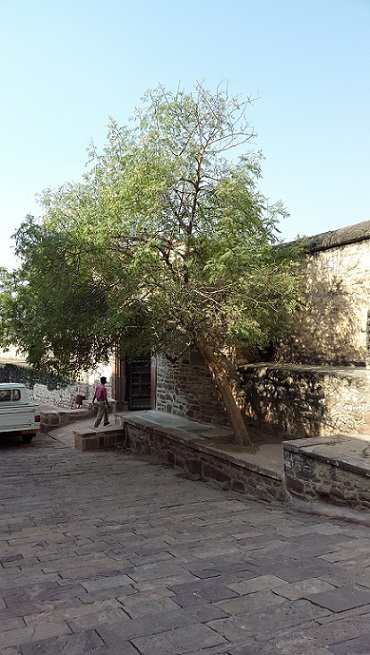
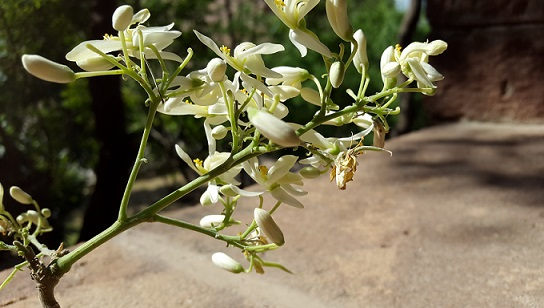
Figs. 14a & 14b, Sargado/bitter drumstick (photographs by Malini Saigal)
Features
- Similar to the soajna or drumstick
- Small tree with feathery leaves
- Enormous roots to anchor in the sandy soil
- Clusters of fragrant cream flowers
- Long striated fruit pods
Name: Lasura/risalla/Indian cherry
Scientific name: Cordia myxa
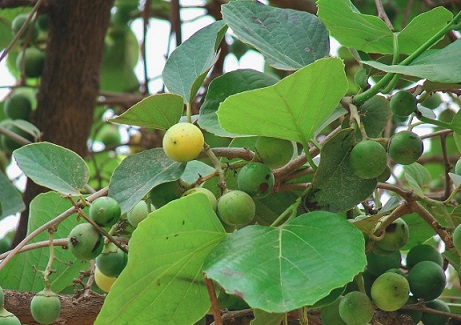
Fig. 15. Lasura (photograph by Chiranjit Parmar, source: Fruitipedia, encyclopaedia of the edible fruits of the world, initiated, coordinated and edited by Dr Chiranjit Parmar)
Features
- Hardy, middle-sized deciduous tree
- Broadly oval leaves
- Round yellow fruit with smooth skin and sticky pulp
- In dry areas, grows around depressions and water margins
Uses/Significance to Community
- Fruit and leaves have multiple medicinal uses
- Fruit is eaten as vegetable and pickled
- Leaves used as fodder
- Wood is light but usable for boats and farming tools
Name: Imli/tamarind
Scientific name: Tamarindus indica
Fig. 16. Imli (Source: Wikimedia Commons)
Features
- Large deciduous tree
- Compound leaves with pairs of leaflets
- Yellow three-petal flowers
- Fruit are green bean-like pods that ripen to brown, with a soft downy texture
- Cultivated across India
Uses/Significance to Community
- The tart fruit is used in cooking and has many medicinal properties
- Imli seeds provide an oil varnish
- The bark is used in tanning and dyeing
Shrubs
Name: Kair/ker/kareel
Scientific name: Capparis decidua
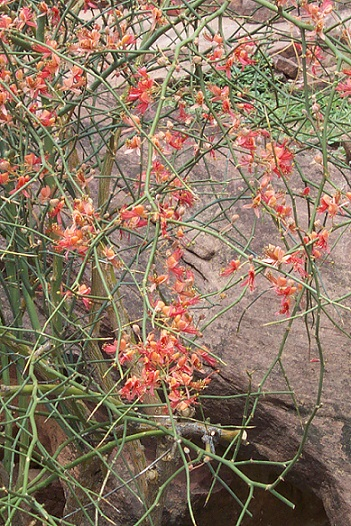
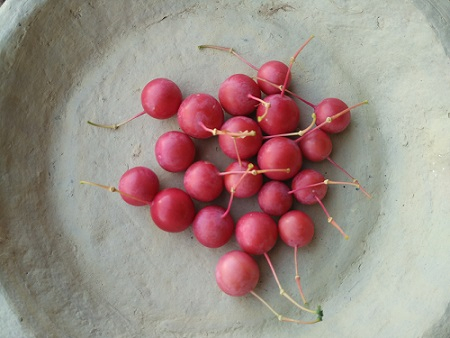
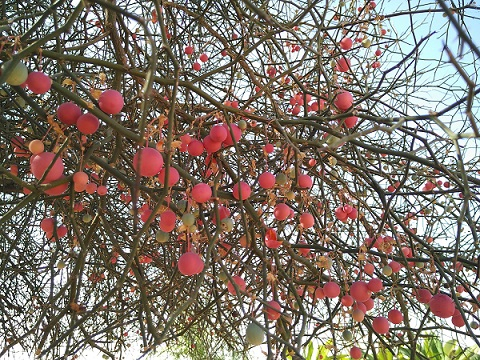
Figs. 17a–17d. Kair (Source: Arna Jharna)
Features
- Spiny bush or small tree, deciduous
- Dense clump of leafless branches
- Tiny leaves, shed quickly in less than a month
- Bright red/orange flowers twice a year
- Round dark pink fruit
Uses/Significance to Community
- The flowers and fruit are pickled or cooked as a vegetable dish
- Is a sand binder that stabilises sand dunes
- Used in traditional medicines
Name: Aakado/aakra/giant milkweed
Scientific name: Caliotropis procera
Figs. 18a–18c. Aakado (Source: 18a & b, Arna Jharna; 18c, photograph by Malini Saigal)
Features
- A large bush with big fleshy leaves
- Small pink/purple flowers in clusters
- Ubiquitous in dry sandy areas and along roads and highways
Uses/Significance to Community
- All parts of the plant are poisonous
- The aakra flower is sacred to Hindus and is offered in prayers to Shiva
Name: Kheemp/broom brush
Scientific name: Leptadenia pyrotechnica
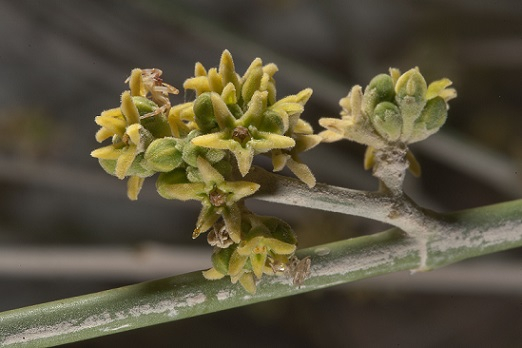
Figs. 19a–19c. Kheemp (19a, photograph by Malini Saigal; 19b, Wikimedia Commons; 19c, Arna Jharna)
Features
- Grows up to two and a half metres
- Wiry stems and leaves
- Tiny star-shaped flowers
Uses/Significance to Community
- A sand binder
- The dried stems are used for thatching and to make brooms
- Fruit is collected and cooked as a vegetable dish
- Traditional medicine for sheep
Name: Phog
Scientific name: Calligonum polygonides
Features
- Small shrub that grows up to one or two metres
Uses/Significance to Community
- Edible flowers called phogalo
- Provides fodder
- Its charcoal is used to melt iron
Name: Bui/desert cotton
Scientific name: Aerva javanica
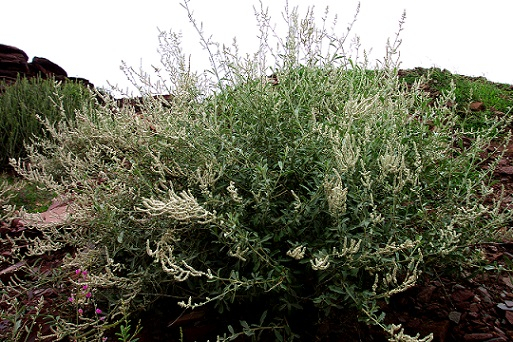
Figs. 20a–20c. Bui (20a, Arna Jharna; 20b & 20c, photographs by Malini Saigal)
Features
- Most common desert bush
- Produces thick white inflorescence
- Grows up to a metre high
Uses/Significance to Community
- A sand binder
- The fluffy flowers are used as filling for bedding
- Anti-inflammatory in traditional medicine
- Fodder for goats
Name: Thhor/danda thor/leafless spurge
Scientific name: Euphorbia caducifolia
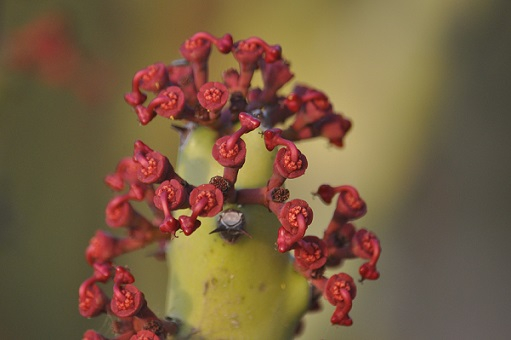
Figs. 21a & 21b. Thhor (21a, photograph by Malini Saigal; 21b, Arna Jharna)
Features
- Multi-stemmed succulent that grow to a large circumference
- Small red or green flowers
Uses/Significance to Community
- It creates a mini protected zone within its stems where rodents, small animals and a host of plants prosper in shade and safety
Name: Baonli
Scientific name: Acacia jacquemontii
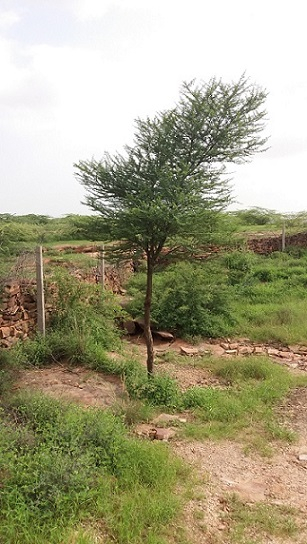
Fig. 22. Baonli (photograph by Vishal Pratap Singh Deo)
Features
- Hardy shrub with multiple shoots
- Up to two metres tall
Uses/Significance to Community
- Sand binder
- Used in traditional medicine
- Provides fodder and fuelwood
Name: Sinniya/senna/swarna patri
Scientific name: Cassia augustiflora
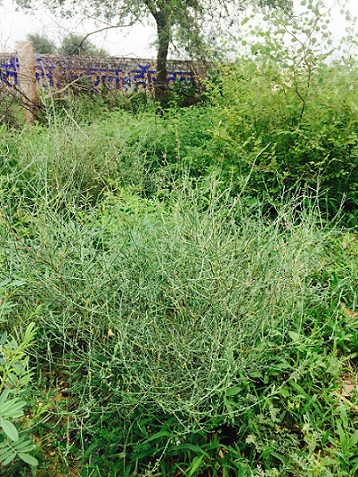
Fig. 23. Sinniya (photograph by Yashaswini Chandra)
Features
- Small perennial shrub
- Yellow flowers
Uses/Significance to Community
- Leaves and seed used in medicine as laxative and blood purifier
Name: Tulsi/holy basil/ sweet basil
Scientific name: Ocimum tenuiflorum
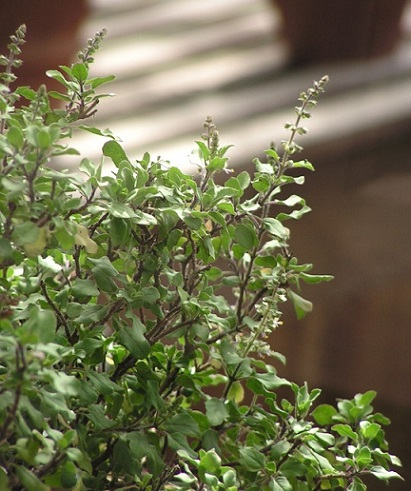
Fig. 24. Tulsi (Source: Wikimedia Commons)
Features
- Small aromatic shrub
- Green and purple leaves, small purplish flowers
Uses/Significance to Community
- Seeds and leaves used in traditional medicine to cure bronchitis, stress, acne and leucoderma
- Significant in Hindu rituals
Name: Dhatura/thorn apple/devil’s trumpet
Scientific name: Datura stramonium

Fig. 25. Dhatura (Source: Arna Jharna)
Features
- Foul-smelling bush
- Up to two metres tall
- Bell-shaped white-violet flowers
- Highly toxic plant
Uses/Significance to Community
- Traditional medicine for asthma, as an analgesic and as an anaesthetic
Name: Kaner/desert rose
Scientific name: Nerium indicum
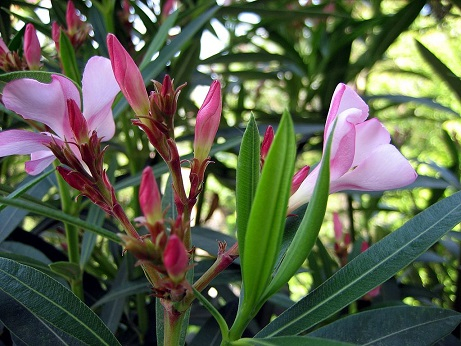
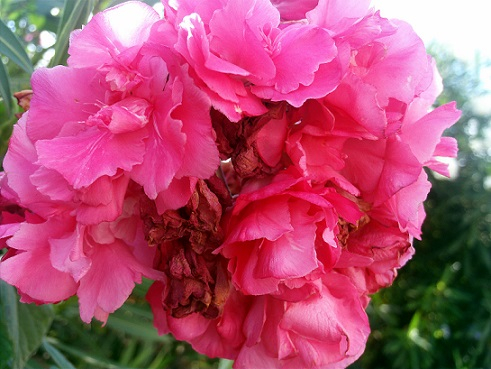
Figs. 26a & 26b. Kaner (Source: Wikimedia Commons)
Features
- Tall evergreen shrub that rises up to five metres
- Pale to bright pink scented flowers
Uses/Significance to Community
- Traditional medicine for malaria, ulcers, piles, skin diseases
- Also used to induce abortions
